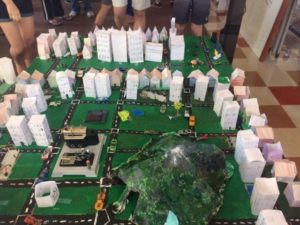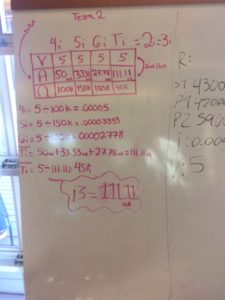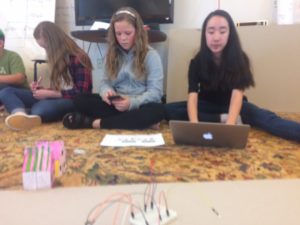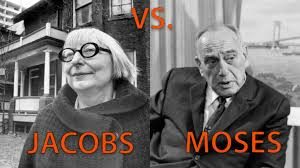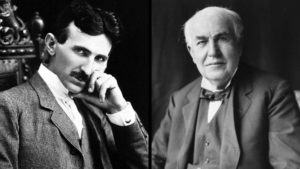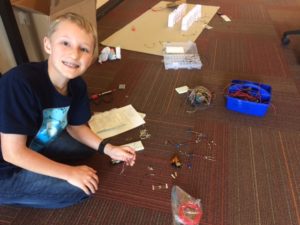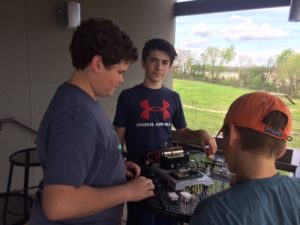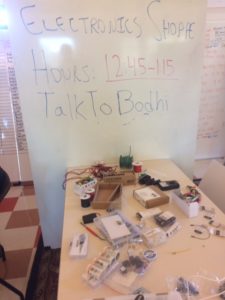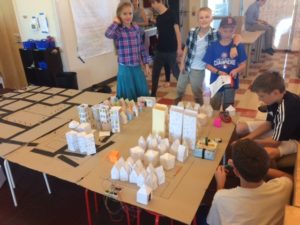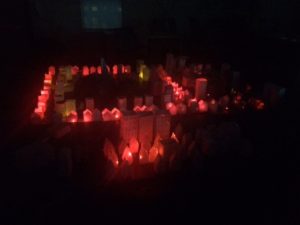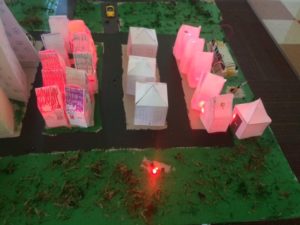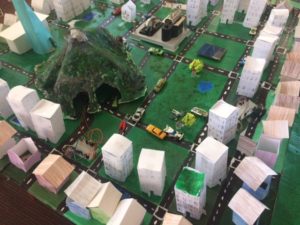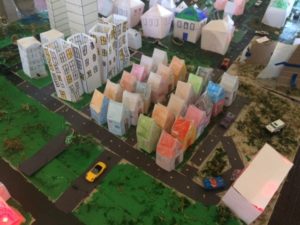Middle School Eagles hosted the Electricity Quest Exhibition Friday, exploring the question: “Are great cities planned or do they emerge?”
Along the way, middle schoolers dug deeply into voltage, current, resistance, Ohm’s law and designing circuits in series and parallel; the struggle between urban freedom fighter Jane Jacobs and uber city planner Robert Moses and and the tussles of inventors Nikola Tesla and Thomas Edison.
Plus, Eagles experimented with different forms of electrical generation – coal, gas, wind, solar and nuclear – and the costs and risks of each.
The Best 21st Century City would have the highest population, most amenities and lowest cost of electricity, leading to the highest per capita income and lowest cost of living per capita, thus the most prosperous city. Of course, there were awards for the most beautiful and creative cities too, as well as the city with the most monuments to Electricity Heroes.
Sound difficult? It gets worse. Each building had different lighting requirements, therefore different voltage and current needs – and each wasted Watt meant a higher cost of living.
Since per capita income increased with population – a real world truism – winning required combining your neighborhood with others, who often had a different voltage. Not surprisingly, Eagles could be found wiring, testing and re-wiring as late as 9 pm some nights.
During the exhibition Eagles had a chance to present their “I have a dream for my city” persuasive speeches and field Electricity Bee questions to demonstrate their grasp of electrical theory.
Finally, the grand finale. Once each city had been electrified for its required hour, a series of dice rolls determined if anything unexpected would happen to power generation costs. After all, sometimes the wind doesn’t blow; coal prices soar or solar power subsidies disappear. Then one last test – would the city economics survive a rolling blackout or brownout?
It was a far from pristine exhibition, with much energy expended on last minute additions to the cities. Nevertheless, the cities themselves spoke to how much had been learned. As one adult Electrical Engineer said: “They learned more in this quest about electricity than I did in college.”
Theory. Simulation. Hands on contests.
Artistic freedom. Competition. Real world economics and uncertainly.
Whether the result of careful planning or emergent growth, or both – quite something to behold from the city builders of tomorrow.
